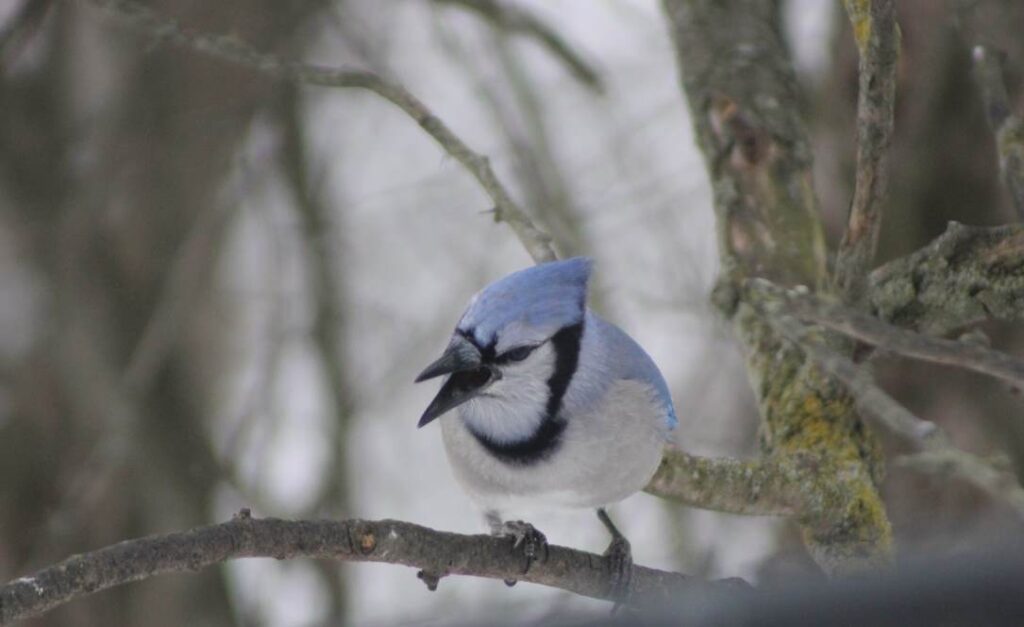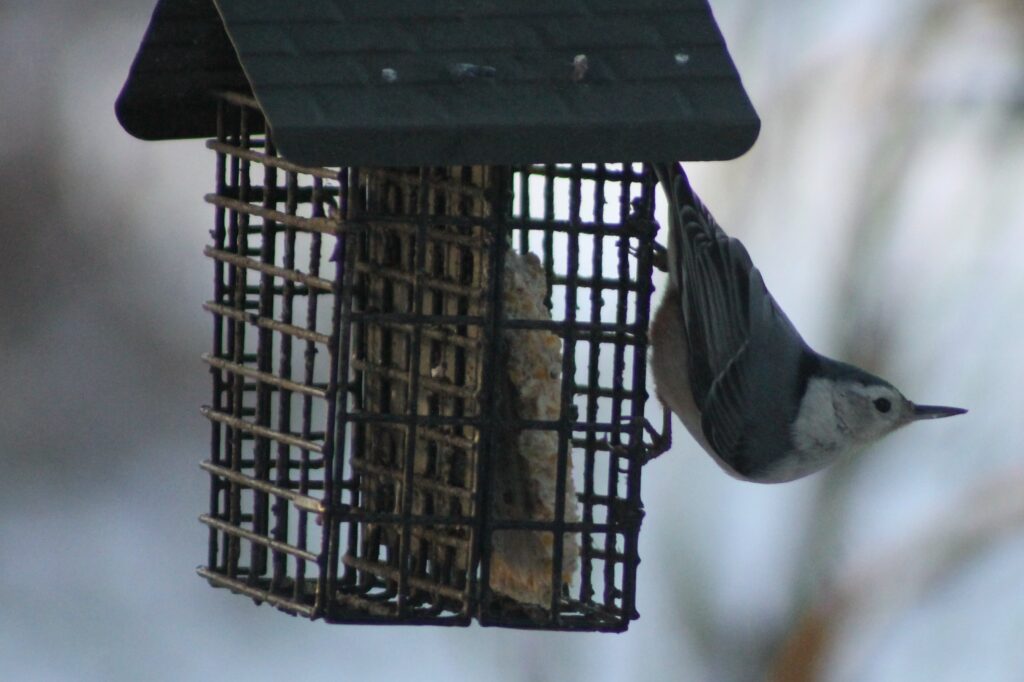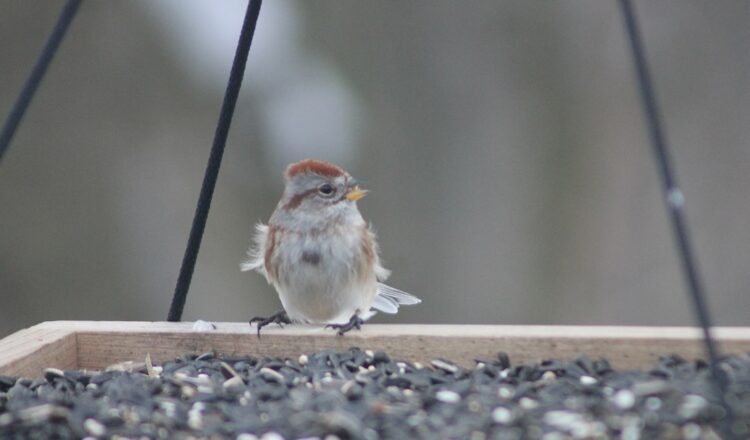“Americans spend $12 billion a year on feeding birds. Twelve billion! Whoa!”
By Bob Confer,
This birdfeeding season has left many bird lovers lonely and heartbroken.
Their feeders have been lightly used and, on many a day, totally unvisited.
That’s an outcome of the gentle el Nino winter we’ve had. Snowfall, which would normally cover natural food sources, has been minimal and it seems to thaw within a day or two of falling. That combined with recurring temperatures in the 40s — which activate insects as food while also keeping birds metabolisms at a more normal rate – has really lessened birds’ needs to visit your feeders.
But, that’s about to change.
Coming up is a good stretch of days with highs in the 20s (and even the teens) with some overnight lows in the single digits. That will make the birds ravenous little creatures who need more calories than usual to stay warm and stay alive.
Finally, you will be able to once again enjoy the backyard birdwatching that you expect out of our winters.
Here come the questions:
How do you do it?
How do I do it?
Like politics or sports, everyone has their own opinions when it comes to this hobby. We each have our favorite foods and our favorite feeders. There’s an entire industry built around that – Americans spend $12 billion a year on feeding birds. Twelve billion! Whoa!
Do what you do for how it fits your yard and what you want from birdwatching.
Here are some reflections on my experiences and preferences about feeding the birds…
Mixed seed
Mixed seed is the most common type of birdfeed out there. You can find various mixed seeds for sale almost anywhere, from grocery stores to hardware stores.
I used to have a traditional feeder in my yard that was used to deliver this stuff, but ten years ago I completely ditched the use of mixed seeds. I am much richer for it – both in terms of my finances and my bird watching experiences.
I had found that mixed seeds, especially out where I live in farm country, had attracted too many undesirable birds that didn’t have the ability or desire to crack larger seeds but were well-fitted to consume small seeds. My yard would be besieged by house sparrows, starlings and cowbirds. You don’t really want to feed those birds – the first two are invasive species that have accounted for a decline in native birds while the cowbird survives only by forcing its eggs and young upon other birds, to the detriment of the adoptive parents’ population.
Because of those avian fiends visiting my yard by the dozens, I would go through a whole feeder and a half of mixed seed every day. Over the course of a winter, that could put you in the poor house.

Sunflower seeds
Now, I use that traditional feeder and a tube feeder with large openings to administer sunflower seeds. This keeps the undesirables away, and instead attracts birds I want to see: chickadees, woodpeckers, nuthatches, cardinals, and finches of various sorts. The finches have bills built for cracking seeds and eating their contents right at the feeder, while the chickadees and nuthatches have to do a little work to crack them open elsewhere, often using trunks and branches as levers and braces.
There are two types of sunflower seeds on the market – striped and black oil. I prefer black oil seeds because they are much easier for birds to open. Striped seeds are tough and you will find that fewer species and fewer numbers of birds have interest in them.
I also make it a point to buy sunflower with the shells intact. There are sunflower hearts and chips available on the market, but they can spoil easily in the feeder (even in just a day or two if they get rained on) and that will make birds sick.
One drawback to sunflowers is the shell casings that will be left on the ground below your feeders. You will have to rake and shovel them up at least once a week to prevent rot and disease.
Nyjer or thistle
Nyjer seeds, also called thistle seeds by some suppliers, are small and expensive…you might find them to cost $2 to $3 per pound depending on where and when you shop (while sunflower seeds typically cost 50 cents to 75 cents per pound). But, despite the cost, a 10-pound bag of nyjer will last a very long time. I can make that last most of the winter, even if my yard is frequented by a dozen or so finches on a daily basis.
Nyjer is one of my favorite seeds as the feeders attract some interesting birds – they will bring in goldfinches and winter irruptives from the Far North like very tame pine siskin and the occasional redpoll.
There are two ways to offer these seeds. One is a tube feeder made of metal or plastic mesh that the finches will hang from and pull seeds from. I used to use mesh feeders but stopped some years because they can be a pain to clean. It doesn’t take much for cracked nyjer seeds to spoil, so any seeds or casings left in the lower basin of a tube feeder will rot and make birds sick unless you clean it regularly (at least once a week).
A cleaner alternative to the tube feeder is the sock feeder. They typically feature a dome under which a sock or two hangs. In that sock you will put nyjer seed and the birds will do as they did with the mesh – hang from it and pull the seeds through the little holes. The socks can be cleaned easily and not that they need much of it — they harbor very little disease — and most feeder kits come with multiple replacement socks.
It takes quite a while for flocks of birds to consume nyjer, so never fill the socks all the way up — even a third of the way might be pushing it. You will have to watch how the birds pace themselves over the first few weeks of their visits before you go wild filling the socks.

Suet
Suet, a collection of animal fat and seeds in a brick form, is a critical food source in the winter. The calories it provides are a lifesaver for insect eaters like nuthatches and woodpeckers that might have difficulty finding prey during the coldest days.
I have mine in a small hanging basket and keep two bricks going at once.
Year round feeding
Some birdwatchers might be interested to know that I keep my seed feeding station going all year. It’s especially enjoyable in May and June when the goldfinches are in full color and in full song. It can make for a very colorful and musical lawn. I also enjoy watching a nesting pair of nuthatches in my yard – mom and dad will come to the feeder, each grab one seed, and fly it to their nest hundreds of feet away…all day long.
Where I live in Niagara County I can get away with this. But, I would never do it where I hang out in Allegany County…it’s bear country. You don’t want to tempt bruins with feed in the warm months when they are out of their winter slumber. As the saying goes, a fed bear is a dead bear…don’t get them used to getting easy meals in the presence of humans.
Also, it should be noted that you should never put out suet from April to early August. It can get soft, which puts the greasy fat on birds’ feathers which can be taken back to the nest. That grease will cover an egg and suffocate the embryo.
Enjoy the bird feeding and bird watching coming your way!







